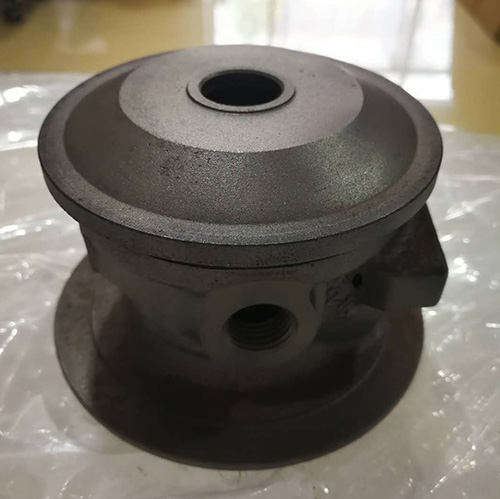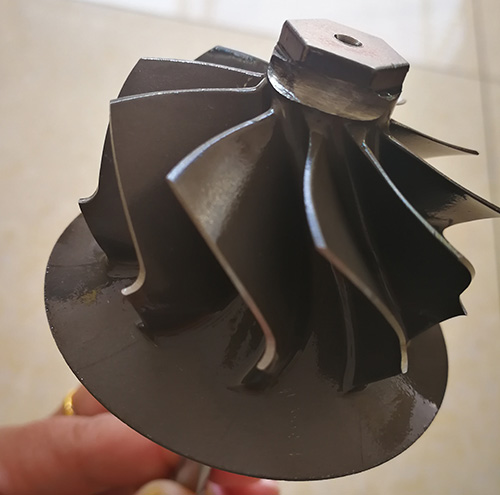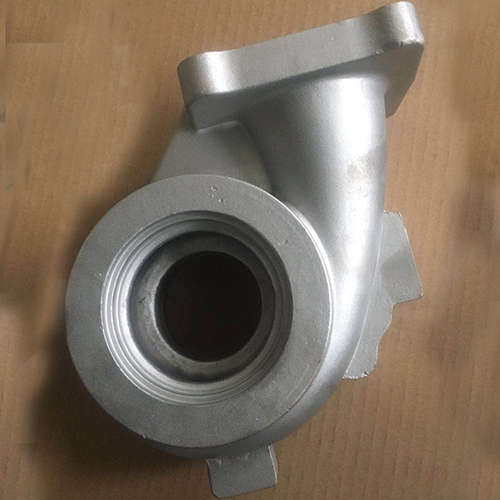Wet zinc smelting - water release impurities in neutral leaching process (1)
In the wet zinc smelting process, go through three leachate purification process, a first material is fired at neutral leaching, the leaching control final pH, the hydrolysis of the impurity element, retained in the leaching residue. The second is a neutral leachate, which must be cleaned and decontaminated before electrolysis of zinc, so that the content of impurities in the neutral leachate meets the requirements of electrowinning zinc. The third purification process is the removal of iron from the acid leaching solution because in the hot acid leaching, a large amount of iron enters the solution, and the iron precipitate in the solution is removed.
The neutral impurities diffuse out during the process of water release is done in the neutral leaching, i.e. the end of the leaching solution pH is adjusted, zinc ions will not hydrolyzed, and the impurity metal ions in whole or in part hydroxide Me ( OH) Form n precipitates. Metal ion hydrolysis is carried out as follows.
Me n+ +nH 2 0 ==== Me(OH) n +nH + (10)
This reaction formula (10) has no electron transfer and the ion activity is only related to pH. The equilibrium condition of the reaction is 1
pH=pH ө - — lga Me n+
n
When the pH of the aqueous medium is greater than the standard pH Ó©, a Me n + 1 is less than it, the metal ions will precipitate hydrolysis. Conversely, pH of the aqueous medium is less than a standard pH Ó©, a Me n + is greater than 1, Me (OH) n will be dissolved.
Therefore, pH ө is an important value for the degree of hydrolysis of metal ions Me n+ . The pH 25 ө and PH 70 enthalpy values ​​calculated by the above formula (10) are shown in the table below.
Based on the pH enthalpy , the pH value for the hydrolysis equilibrium of the metal ion can be calculated.
1
According to the equilibrium relationship of the reaction formula (10), that is, pH=pH Ó© - lga Me n+ , as shown in the following figure. It can be seen that metal ions
n
Where the activity stability in solution changes with pH changes. [next]
pH Ó© equilibrium value when Me(OH) n is generated | ||||
Me(OH) n +nH + === Me n+ +nH 2 O | △G ө ( 2 5 ° C) / ( j · mol -1 ) | S ө ( 2 5 ° C) / ( j · mol -1 · k -1 ) | pH 25 ө | pH 70 ө |
Tl(OH) 3 +3H + === Tl 3+ +3H 2 O | 51431 | -285 | -0.716 | -0.755 |
Co(OH) 3 +3H + === Co 3+ +3H 2 O | 25081 | -- | -0.35 | -- |
FeOOH(OH) 3 +3H + === FeOOH 3+ +3H 2 O | 22591 | -957.4 | -0.3154 | -0.807 |
Cr(OH) 3 +3H + === Cr 3+ +3H 2 O | -106501 | -752.1 | 1.533 | 0.923 |
Fe(OH) 3 +3H + === Fe 3+ +3H 2 O | -115547 | -752.1 | 1.617 | 0.99 |
Ga(OH) 3 +3H + === Ga 3+ +3H 2 O | -134010 | -930.8 | 1.87 | 1.12 |
In(OH) 3 +3H + === In 3+ +3H 2 O | -206595 | -645.3 | 2.883 | 2.16 |
Al(OH) 3 +3H + === Al 3+ +3H 2 O | -230744 | -731.1 | 3.22 | 2.4 |
Bi(OH) 3 +3H + === Bi 3+ +3H 2 O | -267410 | -- | 3.732 | -- |
Sn(OH) 3 +2H + === Sn 2+ +2H 2 O | -35830 | 77.6 | 0.75 | 0.717 |
TlOH === Tl + +H 2 O | -327532 | 522.2 | 13.9 | 12.95 |
Cu(OH) 3 +2H + === Cu 2+ +2H 2 O | -219987 | -160.6 | 4.604 | 3.87 |
Zn(OH) 3 +2H + === Zn 2+ +2H 2 O | -279564 | -208.7 | 5.85 | 4.91 |
Cr(OH) 3 +2H + === Cr 2+ +2H 2 O | -265507 | -- | 5.49 | -- |
Ni(OH) 3 +2H + === Ni 2+ +2H 2 O | -290938 | -414.5 | 6.09 | 4.96 |
Pb(OH) 3 +2H + === Pb 2+ +2H 2 O | -325813 | -307 | 6.82 | 6.18 (5.678) |
Fe(OH) 3 +2H + === Fe 2+ +2H 2 O | -317145 | -221.9 | 6.65 | 5.6 |
Cd(OH) 3 +2H + === Cd 2+ +2H 2 O | -329873 | -57 | 7.2 | 6.2 |
Mn(OH) 3 +2H + === Mn 2+ +2H 2 O | -365703 | -134.3 | 7.655 | 6.55 |
Co(OH) 3 +2H + === Co 2+ +2H 2 O | -300971 | -230.6 | 6.3 | 5.29 |
[next]

As the leaching process progresses, the acidity of the solution gradually decreases. From the above figure, it can be seen that certain impurities change with the pH value, and the hydrolysis can be removed. The higher the pH at which the end point of the leaching is controlled, the more thorough the hydrolysis of impurities is removed. However, zinc sulfate also undergoes hydrolysis and precipitation at a certain pH. The pH value of zinc hydrolysis is related to its concentration. For example, the concentration of zinc in the production practice is 130-140g/L, and the maximum pH allowed for leaching is not more than 5.5~5.6. . Therefore, in order to ensure the specified zinc concentration in industrial production, the pH value of the leaching end point is 5.2 to 5.4. In summary, when the pH of the leaching end point is controlled at 5.2 to 5.4, according to the possibility of hydrolysis and removal of various impurities in the above table and the above figure, and the need for subsequent processes of leaching, in the production practice, the water is released after the leaching of impurities is mainly For iron, arsenic , antimony and silicon, due to the close relationship between iron and arsenic, antimony, iron and silicon in the process of hydrolysis and precipitation, the hydrolysis of these elements is not only related to their own purification, but also It also becomes the key to whether the leaching pulp can be well clarified and filtered.
Iron Castings -- Cast Iron Turbocharger Parts
Products for turbocharger mainly include: Turbine housing, intermediate body, compressor housing, turbine wheel, compressor wheel, turbine shaft and so on.
Material: cast iron, Cast Steel, cast aluminum etc..
Besides the melting furnaces, molding lines, machining equipments, we also owned advanced inspection equipments such as X-ray, spectrum, CMM and so on.



Cast Iron Turbocharger Parts,Turbo Compressor,Turbocharger Compressor Wheel,Auto Parts Turbocharger
Dandong Hengrui Machinery Co., Ltd. , http://www.hrcastings.com